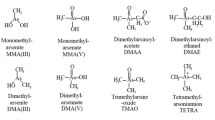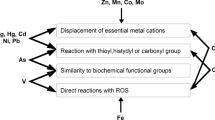Abstract
Metallothioneins (MTs) are ubiquitous metal-binding, cysteine-rich, small proteins and play a major role in metal homeostasis and/or detoxification in all organisms. In a previous study, a novel full length MT gene was isolated from the freshwater crab (Sinopotamon henanense), a species widely distributed in Shanxi and Henan Provinces, China. In this report, the gene for the crab MT was inserted into a PET-28a-6His-SUMO vector and recombinant soluble MT was over-expressed as fusions with SUMO in Escherichia coli. The recombinant fusion protein was purified by affinity chromatography and its biochemical properties were analyzed. In addition, on the basis of constructing SUMO-MT, two mutants, namely SUMO-MTt1 and SUMO-MTt2, were constructed to change the primary structure of SUMO-MT using site-directed mutagenesis techniques with the amino acid substitutions D3C and S37C in order to increase metal-binding capacity of MT. E. coli cells expressing SUMO-MT and these single-mutant proteins exhibited enhanced metal tolerance and higher accumulation of metal ions than control cells. The results showed that the bioaccumulation and tolerance of Zn2+, Cu2+ and Cd2+ in these strains followed the decreasing order of SUMO-MTt1 > SUMO-MTt2 > SUMO-MT. E. coli cells have low tolerance and high accumulation towards cadmium compared to zinc and copper. These results show that the MT of S. henanense could enhance tolerance and accumulation of metal ions. Moreover, we were able to create a novel protein based on the crab MT to bind metal ions at high density and with high affinity. Therefore, SUMO-MT and its mutants can provide potential candidates for heavy metal bioremediation. This study could help further elucidate the mechanism of how the crab detoxifies heavy metals and provide a scientific basis for environment bioremediation of heavy metal pollution using the over-expression of the crab MT and mutant proteins.






Similar content being viewed by others
References
Amiard JC, Amiard-Triquet C, Barka S, Pellerin J, Rainbow PS (2006) Metallothioneins in aquatic invertebrates: their role in metal detoxification and their use as biomarkers. Aquat Toxicol 76(2):160–202
Asselman J, Glaholt SP, Smith Z, Smagghe G, Janssen CR, Colbourne JK, Shaw JR, De Schamphelaere KAC (2012) Functional characterization of four metallothionein genes in Daphnia pulex exposed to environmental stressors. Aquat Toxicol 110–111:54–65
Butt TR, Edavettal SC, Hall JP, Mattern MR (2005) SUMO fusion technology for difficult-to-express proteins. Protein Expr Purif 43(1):1–9
Carpenè E, Andreani G, Isani G (2007) Metallothionein functions and structural characteristics. J Trace Elem Med Bio. 21:35–39
Chaturvedi AK, Mishra A, Tiwari V, Jha B (2012) Cloning and transcript analysis of type 2 metallothionein gene (SbMT-2) from extreme halophyte Salicornia brachiata and its heterologous expression in E. coli. Gene 499(2):280–287
Chen S, Wilson DB (1997) Construction and characterization of Escherichia coligenetically engineered for bioremediation of Hg(2+)-contaminated environments. Appl Environ Microbiol 6:2442–2445
Chen Z, Ren L, Shao Q, Shi D, Ru B (1999) Expression of mammalian metallothionein-I gene in cyanobacteria to enhance heavy metal resistance. Mar Pollut Bull 39:155–158
Gao D, Wang GT, Chen XT, Nie P (2009) Metallothionein-2 gene from the mandarin fish Siniperca chuatsi: cDNA cloning, tissue expression, and immunohistochemical localization. Comp Biochem Physiol C: Toxicol Pharmacol 149(1):18–35
Green AD, Buhlmann KA, Hagen C, Romanek C, Gibbons JW (2010) Mercury contamination in turtles and implications for human health. J Environ Health 72(10):14–22
Hassinen VH, Tuomainen M, Peräniemi S, Schat H, Kärenlampi SO, Tervahauta AI (2009) Metallothioneins 2 and 3 contribute to the metal-adapted phenotype but are not directly linked to Zn accumulation in the metal hyperaccumulator. Thlaspi caerulescens J Exp Bot. 60(1):187–196
Hong SH, Gohya M, Ono H, Murakami H, Yamashita M, Hirayama N, Murooka Y (2000) Molecular design of novel metal-binding oligomeric human metallothioneins. Appl Microbiol Biotechnol 54(1):84–89
Huang GY, Wang YS (2010) Expression and characterization analysis of type 2 metallothionein from grey mangrove species (Avicennia marina) in response to metal stress. Aquat Toxicol 99(1):86–92
Kagi JHR, Schaffer A (1988) Biochemistry of metallothionein. Biochemistry 27:8509–8515
Kim N, Shon SH, Kim CT, Cho YJ, Kim CJ (2011) Responses of label-free metallothionein sensor immobilized with thiolated antibody. Curr Appl Phys 11:1210–1214
Knapen D, Reynders H, Bervoets L, Verheyen E, Blust R (2007) Metallothionein gene and protein expression as a biomarker for metal pollution in natural gudgeon populations. Aquat Toxicol 82(3):163–172
Kusakabe T, Nakajima K, Nakazato K, Suzuki K, Takada H, Satoh T, Oikawa M, Arakawa K, Nagamine T (2008) Changes of heavy metal, metallothionein and heat shock proteins in Sertoli cells induced by cadmium exposure. Toxicol In Vitro 22(6):1469–1475
Lerch K, Ammer D, Olafson RW (1982) Crab Metallothionein. Primary structures of metallothioneins 1 and 2. J Biol Chem 257(5):2420–2426
Lim KS, Won YW, Park YS, Kim YH (2010) Preparation and functional analysis of recombinant protein transduction domain-metallothionein fusion proteins. Biochimie 92(8):964–970
Liu L, Lomonossoff G (2006) A site-directed mutagenesis method utilising large double-stranded DNA templates for the simultaneous introduction of multiple changes and sequential multiple rounds of mutation: application to the study of whole viral genomes. J Virol Methods 137(1):63–71
Ma WL, Yan T, He YJ, Wang L (2009) Purification and cDNA cloning of a cadmium-binding metallothionein from the freshwater crab Sinopotamon henanense. Arch Environ Contam Toxicol 56(4):747–753
Ma Y, Lin J, Zhang C, Ren Y, Lin J (2011) Cd(II) and As(III) bioaccumulation by recombinant Escherichia coli expressing oligomeric human metallothioneins. J Hazard Mater 185(2–3):1605–1608
Mejáre M, Bülow L (2001) Metal-binding proteins and peptides in bioremediation and phytoremediation of heavy metals. Trends Biotechnol 19(2):67–73
Mir G, Domènech J, Huguet G, Guo WJ, Goldsbrough P, Atrian S, Molinas M (2004) A plant type 2 metallothionein (MT) from cork tissue responds to oxidative stress. J Exp Bot 55(408):2483–2493
Morris CA, Nicolaus B, Sampson V, Harwood JL, Kille P (1999) Identification and characterization of a recombinant metallothionein protein from a marine alga, Fucus vesiculosus. Biochem J 338:553–560
Pérez-Rafael S, Mezger A, Lieb B, Dallinger R, Capdevila M, Palacios O, Atrian S (2012) The metal binding abilities of Megathura crenulata metallothionein (McMT) in the frame of Gastropoda MTs. J Inorg Biochem 108:84–90
Ryu HS, Kang HJ, Kim SK, Kim NS, Kim WY (2009) Purification of carp serum metallothionein induced in carp with cadmium and production of polyclonal antibody. Food Eng Progr 13:314–319
Satakarni M, Curtis R (2011) Production of recombinant peptides as fusions with SUMO. Protein Exp Purif 78:113–119
Sauge-Merle S, Lecomte-Pradines C, Carrier P, Cuiné S, Dubow M (2012) Heavy metal accumulation by recombinant mammalian metallothionein within Escherichia coli protects against elevated metal exposure. Chemosphere 88(8):918–924
Sekhar K, Priyanka B, Reddy VD, Rao KV (2011) Metallothionein 1 (CcMT1) of pigeonpea (Cajanus cajan L.) confers enhanced tolerance to copper and cadmium in Escherichia coli and Arabidopsis thaliana. Environ Exp Bot 72:131–139
Sousa C, Cebolla A, de Lorenzo V (1996) Enhanced metalloadsorption of bacterial cells displaying poly-His peptides. Nat Biotechnol 14:1017–1020
Suleman A, Shakoori AR (2012) Evaluation of physiological importance of metallothionein protein expressed by Tetrahymena cadmium metallothionein 1 (TMCd1) gene in Escherichia coli. J Cell Biochem 113(5):1616–1622
Turchi A, Tamantini I, Camussi AM, Racchi ML (2012) Expression of a metallothionein A1 gene of Pisum sativum in white poplar enhances tolerance and accumulation of zinc and copper. Plant Sci 183:50–56
Van Dyk JC, Pieterse GM, Van Vuren JH (2007) Histological changes in the liver of Oreochromis mossambicus (Cichlidae) after exposure to cadmium and zinc. Ecotoxicol Environ. Saf. 66(3):432–440
Wang H, Pap S, Wiman B (2006) Structures of importance for the stability of antiplasmin as studied by site-directed mutagenesis. Thromb Res 117(3):315–322
Wu CH, Wood TK, Mulchandani A, Chen W (2006) Engineering plant-microbe symbiosis for rhizoremediation of heavy metals. Appl Environ Microbiol 72(2):1129–1134
Wu JP, Chen HC, Huang DJ (2008) Histopathological and biochemical evidence of hepatopancreatic toxicity caused by cadmium and zinc in the white shrimp, Litopenaeus vannamei. Chemosphere 73(7):1019–1026
Yang F, Zhou M, He Z, Liu X, Sun L, Sun Y, Chen Z (2007) High-yield expression in Escherichia coli of soluble human MT2A with native functions. Protein Expr Purif 53(1):186–194
Yudkovski Y, Rogowska-Wrzesinska A, Yankelevich I, Shefer E, Herut B, Tom M (2008) Quantitative immunochemical evaluation of fish metallothionein upon exposure to cadmium. Mar Environ Res 65(5):427–436
Zhang FQ, Wang YS, Sun CC, Lou ZP, Dong JD (2012) A novel metallothionein gene from a mangrove plant Kandelia candel. Ecotoxicology 21(6):1633–1641
Acknowledgments
This work was supported by the National Natural Science Foundation of China (No. 30970361), the Doctor Subject Foundation of the Ministry of Education of China (No. 20111401110010) and the Natural Sciences Foundation of Shanxi Province (No.2010011043-2). We are thankful to Profs. Enmin Zou and Hans-Uwe Dahms for editing a previous version of the manuscript.
Conflict of interest
The authors declare that they have no conflict of interest.
Author information
Authors and Affiliations
Corresponding author
Rights and permissions
About this article
Cite this article
He, Y., Ma, W., Li, Y. et al. Expression of metallothionein of freshwater crab (Sinopotamon henanense) in Escherichia coli enhances tolerance and accumulation of zinc, copper and cadmium. Ecotoxicology 23, 56–64 (2014). https://doi.org/10.1007/s10646-013-1151-0
Accepted:
Published:
Issue Date:
DOI: https://doi.org/10.1007/s10646-013-1151-0




